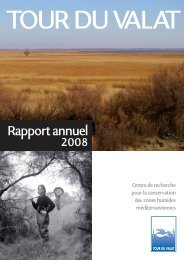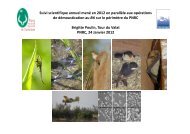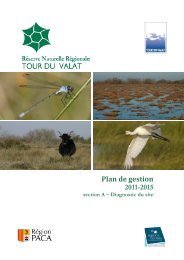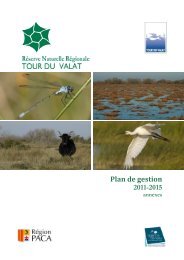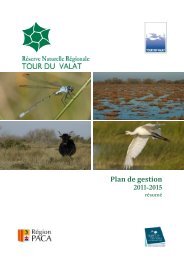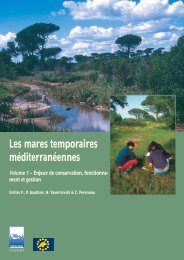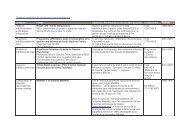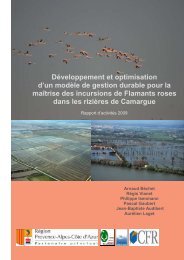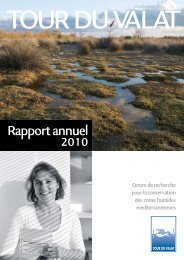- Page 1:
Université de Cergy-PontoiseEcole
- Page 6 and 7:
RemerciementsIl y a des instants en
- Page 8:
Table des matièresIntroduction gé
- Page 12 and 13:
Introduction généraleSi vous ne s
- Page 14 and 15:
Introduction généralecomment la p
- Page 16 and 17:
Introduction généraleEtudier la s
- Page 18 and 19:
Introduction généraleC’est en a
- Page 20 and 21:
Première partieArticuler la strat
- Page 22 and 23:
Chapitre 1De la stratégie de l’O
- Page 24 and 25:
Chapitre 1 - Le cadre d’analyse s
- Page 26 and 27:
Chapitre 1 - Le cadre d’analyse s
- Page 28 and 29:
Chapitre 1 - Le cadre d’analyse s
- Page 30 and 31:
Chapitre 1 - Le cadre d’analyse s
- Page 32 and 33:
Chapitre 1 - Le cadre d’analyse s
- Page 34 and 35:
Chapitre 1 - Le cadre d’analyse s
- Page 36 and 37:
Chapitre 1 - Le cadre d’analyse s
- Page 38 and 39:
Chapitre 1 - Le cadre d’analyse s
- Page 40 and 41:
Chapitre 1 - Le cadre d’analyse s
- Page 42 and 43:
Chapitre 1 - Le cadre d’analyse s
- Page 44 and 45:
Chapitre 1 - Le cadre d’analyse s
- Page 46 and 47:
Chapitre 1 - Le cadre d’analyse s
- Page 48 and 49:
Chapitre 1 - Le cadre d’analyse s
- Page 50 and 51:
Chapitre 1 - Le cadre d’analyse s
- Page 52 and 53:
Chapitre 1 - Le cadre d’analyse s
- Page 54 and 55:
Chapitre 1 - Le cadre d’analyse s
- Page 56 and 57:
Chapitre 1 - Le cadre d’analyse s
- Page 58 and 59:
Chapitre 1 - Le cadre d’analyse s
- Page 60 and 61:
Chapitre 1 - Le cadre d’analyse s
- Page 62 and 63:
Chapitre 1 - Le cadre d’analyse s
- Page 64 and 65:
Chapitre 1 - Le cadre d’analyse s
- Page 66 and 67:
Chapitre 2Une recherche inductive e
- Page 68 and 69:
Chapitre 2 - Une approche inductive
- Page 70 and 71:
Chapitre 2 - Une approche inductive
- Page 72 and 73:
Chapitre 2 - Une approche inductive
- Page 74 and 75:
Chapitre 2 - Une approche inductive
- Page 76 and 77:
Chapitre 2 - Une approche inductive
- Page 78 and 79:
Chapitre 2 - Une approche inductive
- Page 80 and 81:
Chapitre 2 - Une approche inductive
- Page 82 and 83:
Chapitre 2 - Une approche inductive
- Page 84 and 85:
Chapitre 2 - Une approche inductive
- Page 86 and 87:
Chapitre 2 - Une approche inductive
- Page 88 and 89:
Chapitre 2 - Une approche inductive
- Page 90 and 91:
Chapitre 2 - Une approche inductive
- Page 92 and 93:
Chapitre 2 - Une approche inductive
- Page 94 and 95:
Chapitre 2 - Une approche inductive
- Page 96 and 97:
Chapitre 2 - Une approche inductive
- Page 98 and 99:
Chapitre 2 - Une approche inductive
- Page 100 and 101:
Chapitre 2 - Une approche inductive
- Page 102 and 103:
Chapitre 2 - Une approche inductive
- Page 104 and 105:
Chapitre 2 - Une approche inductive
- Page 106 and 107:
Chapitre 2 - Une approche inductive
- Page 108 and 109:
Conclusion de la première partieCe
- Page 110 and 111:
Deuxième partieEtudier l’élabor
- Page 112 and 113:
Partie 2 - Ancrage dans des cas con
- Page 114 and 115:
Partie 2 - Ancrage dans des cas con
- Page 116 and 117:
Partie 2 - Ancrage dans des cas con
- Page 118 and 119:
Partie 2 - Ancrage dans des cas con
- Page 120 and 121:
Partie 2 - Ancrage dans des cas con
- Page 122 and 123:
Partie 2 - Ancrage dans des cas con
- Page 124 and 125:
Partie 2 - Ancrage dans des cas con
- Page 126 and 127:
Partie 2 - Ancrage dans des cas con
- Page 128 and 129:
Partie 2 - Ancrage dans des cas con
- Page 130 and 131:
Partie 2 - Ancrage dans des cas con
- Page 132 and 133:
Partie 2 - Ancrage dans des cas con
- Page 134 and 135:
Partie 2 - Ancrage dans des cas con
- Page 136 and 137:
Partie 2 - Ancrage dans des cas con
- Page 138 and 139:
Partie 2 - Ancrage dans des cas con
- Page 140 and 141:
Partie 2 - Ancrage dans des cas con
- Page 142 and 143:
Partie 2 - Ancrage dans des cas con
- Page 144 and 145:
Partie 2 - Ancrage dans des cas con
- Page 146 and 147:
Partie 2 - Ancrage dans des cas con
- Page 148 and 149:
Partie 2 - Ancrage dans des cas con
- Page 150 and 151:
Partie 2 - Ancrage dans des cas con
- Page 152 and 153:
Partie 2 - Ancrage dans des cas con
- Page 154 and 155:
Partie 2 - Ancrage dans des cas con
- Page 156 and 157:
Partie 2 - Ancrage dans des cas con
- Page 158 and 159:
Partie 2 - Ancrage dans des cas con
- Page 160 and 161:
Partie 2 - Ancrage dans des cas con
- Page 162 and 163:
Partie 2 - Ancrage dans des cas con
- Page 164 and 165:
Partie 2 - Ancrage dans des cas con
- Page 166 and 167:
Partie 2 - Ancrage dans des cas con
- Page 168 and 169:
Partie 2 - Ancrage dans des cas con
- Page 170 and 171:
Partie 2 - Ancrage dans des cas con
- Page 172 and 173:
Partie 2 - Ancrage dans des cas con
- Page 174 and 175:
Partie 2 - Ancrage dans des cas con
- Page 176 and 177:
Partie 2 - Ancrage dans des cas con
- Page 178 and 179:
Partie 2 - Ancrage dans des cas con
- Page 180 and 181:
Partie 2 - Ancrage dans des cas con
- Page 182 and 183:
Partie 2 - Ancrage dans des cas con
- Page 184 and 185:
Partie 2 - Ancrage dans des cas con
- Page 186 and 187:
Partie 2 - Ancrage dans des cas con
- Page 188 and 189:
Partie 2 - Ancrage dans des cas con
- Page 190 and 191:
Partie 2 - Ancrage dans des cas con
- Page 192 and 193:
Partie 2 - Ancrage dans des cas con
- Page 194 and 195: Partie 2 - Ancrage dans des cas con
- Page 196 and 197: Partie 2 - Ancrage dans des cas con
- Page 198 and 199: Partie 2 - Ancrage dans des cas con
- Page 200 and 201: Partie 2 - Ancrage dans des cas con
- Page 202 and 203: Partie 2 - Ancrage dans des cas con
- Page 204 and 205: Partie 2 - Ancrage dans des cas con
- Page 206 and 207: Partie 2 - Ancrage dans des cas con
- Page 208 and 209: Partie 2 - Ancrage dans des cas con
- Page 210 and 211: Partie 2 - Ancrage dans des cas con
- Page 212 and 213: Partie 2 - Ancrage dans des cas con
- Page 214 and 215: Partie 2 - Ancrage dans des cas con
- Page 216 and 217: Partie 2 - Ancrage dans des cas con
- Page 218 and 219: Partie 2 - Ancrage dans des cas con
- Page 220 and 221: Partie 2 - Ancrage dans des cas con
- Page 222 and 223: Partie 2 - Ancrage dans des cas con
- Page 224 and 225: Partie 2 - Ancrage dans des cas con
- Page 226 and 227: Partie 2 - Ancrage dans des cas con
- Page 228 and 229: Partie 2 - Ancrage dans des cas con
- Page 230 and 231: Partie 2 - Ancrage dans des cas con
- Page 232 and 233: Partie 2 - Ancrage dans des cas con
- Page 234 and 235: Partie 2 - Ancrage dans des cas con
- Page 236 and 237: Partie 2 - Ancrage dans des cas con
- Page 238 and 239: Partie 2 - Ancrage dans des cas con
- Page 240 and 241: Partie 2 - Ancrage dans des cas con
- Page 242 and 243: Partie 2 - Ancrage dans des cas con
- Page 246 and 247: Partie 2 - Ancrage dans des cas con
- Page 248 and 249: Partie 2 - Ancrage dans des cas con
- Page 250 and 251: Partie 2 - Ancrage dans des cas con
- Page 252 and 253: Partie 2 - Ancrage dans des cas con
- Page 254 and 255: Partie 2 - Ancrage dans des cas con
- Page 256 and 257: Partie 2 - Ancrage dans des cas con
- Page 258 and 259: Partie 2 - Ancrage dans des cas con
- Page 260 and 261: Partie 2 - Ancrage dans des cas con
- Page 262 and 263: Partie 2 - Ancrage dans des cas con
- Page 264 and 265: Partie 2 - Ancrage dans des cas con
- Page 266 and 267: Partie 2 - Ancrage dans des cas con
- Page 268 and 269: Partie 2 - Ancrage dans des cas con
- Page 270 and 271: crage dans des cas concrets d’act
- Page 272 and 273: Partie 2 - Ancrage dans des cas con
- Page 274 and 275: Partie 2 - Ancrage dans des cas con
- Page 276 and 277: Partie 2 - Ancrage dans des cas con
- Page 278 and 279: Partie 2 - Ancrage dans des cas con
- Page 280 and 281: Partie 2 - Ancrage dans des cas con
- Page 282 and 283: Conclusion de la deuxième partieNo
- Page 284 and 285: Conclusion de la deuxième partiepr
- Page 286 and 287: Conclusion de la deuxième partieCe
- Page 288 and 289: Partie 3 - Réflexion stratégique
- Page 290 and 291: Partie 3 - Réflexion stratégique
- Page 292 and 293: Partie 3 - Réflexion stratégique
- Page 294 and 295:
Partie 3 - Réflexion stratégique
- Page 296 and 297:
Partie 3 - Réflexion stratégique
- Page 298 and 299:
Partie 3 - Réflexion stratégique
- Page 300 and 301:
Partie 3 - Réflexion stratégique
- Page 302 and 303:
Partie 3 - Réflexion stratégique
- Page 304 and 305:
Partie 3 - Réflexion stratégique
- Page 306 and 307:
Partie 3 - Réflexion stratégique
- Page 308 and 309:
Partie 3 - Réflexion stratégique
- Page 310 and 311:
Partie 3 - Réflexion stratégique
- Page 312 and 313:
Partie 3 - Réflexion stratégique
- Page 314 and 315:
Partie 3 - Réflexion stratégique
- Page 316 and 317:
Partie 3 - Réflexion stratégique
- Page 318 and 319:
Partie 3 - Réflexion stratégique
- Page 320 and 321:
Partie 3 - Réflexion stratégique
- Page 322 and 323:
Partie 3 - Réflexion stratégique
- Page 324 and 325:
Partie 3 - Réflexion stratégique
- Page 326 and 327:
Partie 3 - Réflexion stratégique
- Page 328 and 329:
Partie 3 - Réflexion stratégique
- Page 330 and 331:
Partie 3 - Réflexion stratégique
- Page 332 and 333:
Partie 3 - Réflexion stratégique
- Page 334 and 335:
Partie 3 - Réflexion stratégique
- Page 336 and 337:
Partie 3 - Réflexion stratégique
- Page 338 and 339:
Partie 3 - Réflexion stratégique
- Page 340 and 341:
Partie 3 - Réflexion stratégique
- Page 342 and 343:
Partie 3 - Réflexion stratégique
- Page 344 and 345:
Partie 3 - Réflexion stratégique
- Page 346 and 347:
Partie 3 - Réflexion stratégique
- Page 348 and 349:
Partie 3 - Réflexion stratégique
- Page 350 and 351:
Partie 3 - Réflexion stratégique
- Page 352 and 353:
Partie 3 - Réflexion stratégique
- Page 354 and 355:
Partie 3 - Réflexion stratégique
- Page 356 and 357:
Partie 3 - Réflexion stratégique
- Page 358 and 359:
Partie 3 - Réflexion stratégique
- Page 360 and 361:
Partie 3 - Réflexion stratégique
- Page 362 and 363:
Partie 3 - Réflexion stratégique
- Page 364 and 365:
Partie 3 - Réflexion stratégique
- Page 366 and 367:
Partie 3 - Réflexion stratégique
- Page 368 and 369:
Partie 3 - Réflexion stratégique
- Page 370 and 371:
Partie 3 - Réflexion stratégique
- Page 372 and 373:
Partie 3 - Réflexion stratégique
- Page 374 and 375:
Partie 3 - Réflexion stratégique
- Page 376 and 377:
Partie 3 - Réflexion stratégique
- Page 378 and 379:
Partie 3 - Réflexion stratégique
- Page 380 and 381:
Partie 3 - Réflexion stratégique
- Page 383 and 384:
Chapitre 7Relier stratégie et impa
- Page 385 and 386:
Chapitre 7 - L’évaluation entre
- Page 387 and 388:
Chapitre 7 - L’évaluation entre
- Page 389 and 390:
Chapitre 7 - L’évaluation entre
- Page 391 and 392:
Chapitre 7 - L’évaluation entre
- Page 393 and 394:
Chapitre 7 - L’évaluation entre
- Page 395 and 396:
Chapitre 7 - L’évaluation entre
- Page 397 and 398:
Chapitre 7 - L’évaluation entre
- Page 399 and 400:
Chapitre 7 - L’évaluation entre
- Page 401 and 402:
Chapitre 7 - L’évaluation entre
- Page 403 and 404:
Chapitre 7 - L’évaluation entre
- Page 405 and 406:
Chapitre 7 - L’évaluation entre
- Page 407 and 408:
Chapitre 7 - L’évaluation entre
- Page 409 and 410:
Chapitre 7 - L’évaluation entre
- Page 411 and 412:
Chapitre 7 - L’évaluation entre
- Page 413 and 414:
Chapitre 7 - L’évaluation entre
- Page 415 and 416:
Chapitre 7 - L’évaluation entre
- Page 417 and 418:
Conclusion de la troisième partieL
- Page 419 and 420:
Conclusion de la troisième partieE
- Page 421 and 422:
Conclusion de la troisième partiel
- Page 423:
Conclusion de la troisième partie-
- Page 426 and 427:
Conclusion généraleal., 2000), le
- Page 428 and 429:
Conclusion générale1. Premièreme
- Page 430 and 431:
Conclusion généralezone côtière
- Page 432 and 433:
Conclusion généraleQuel raisonnem
- Page 434 and 435:
Conclusion générale3. Le raisonne
- Page 436 and 437:
Conclusion généraleLa modalité d
- Page 438 and 439:
Conclusion généralele manager, su
- Page 440 and 441:
Conclusion généralestratégie ? C
- Page 443 and 444:
BibliographieAbdallah Y., Crivelli
- Page 445 and 446:
Bibliographiefor the recovery of th
- Page 447 and 448:
BibliographieCailluet L. (2008) La
- Page 449 and 450:
BibliographieDavid A., Hatchuel A.,
- Page 451 and 452:
BibliographieGaucherel C. (2003) Pe
- Page 453 and 454:
BibliographieJarzabkowski P., Balog
- Page 455 and 456:
BibliographieLeroy M. (2004) Gestio
- Page 457 and 458:
BibliographieMermet L., Billé R.,
- Page 459 and 460:
BibliographiePatten D.M. (2002) The
- Page 461 and 462:
BibliographieSarewitz D. & Pielke J
- Page 463 and 464:
BibliographieVakil A.C. (1997) Conf
- Page 465 and 466:
BibliographieLittérature griseAmbi
- Page 467 and 468:
Table des matières2.4.3 Négocier
- Page 469 and 470:
Table des matières6.3.2 La théori
- Page 471 and 472:
Table des matièresTableau 3.5 : Co
- Page 473 and 474:
Table des matièresFigure 3.7 : dé




